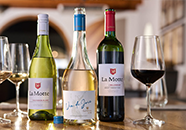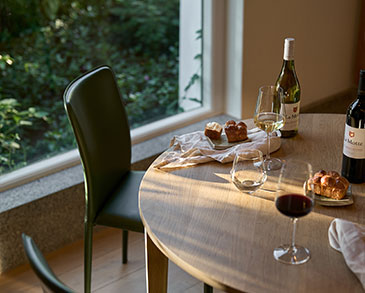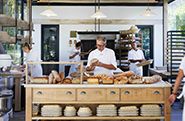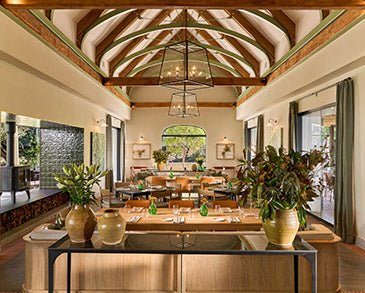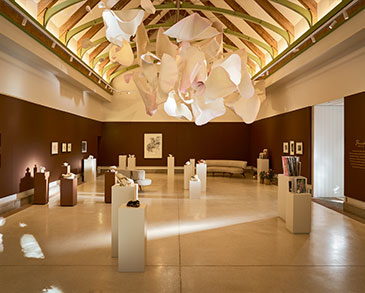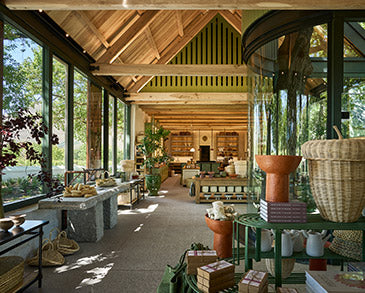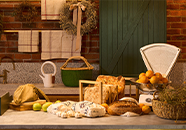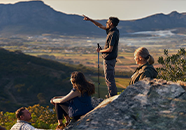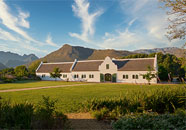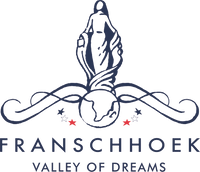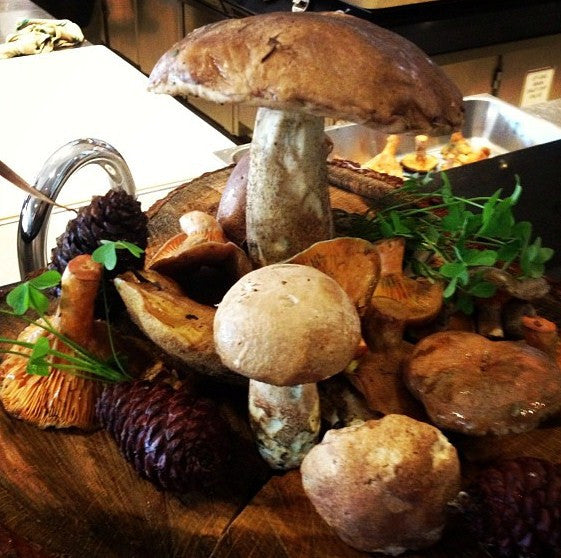
With a focus on sourcing local and sustainable ingredients, foraging or “hunting” for ingredients has become increasingly popular under chefs and their culinary following and with winter in the Cape Winelands, it is now the time to collect wild mushrooms.
Today, harvesting wild mushrooms is not a well-known concept in South Africa. We have all seen television programmes of chefs searching for mushrooms and dogs sniffing for truffles in the woods of Italy and France, but to us, mushrooms in the wild have the enchantment of fairy tales and the threat of being poisonous and most of us feel safer buying them from a supermarket.
It was not always like this though. Research into the cuisine of the European settlers in South Africa, has resulted in La Motte’s cookbook, called Cape Winelands Cuisine.

Cape Winelands Cuisine Cookbook
This compilation of historic recipes adjusted to the modern day kitchen shows that mushrooms have been used in an array of recipes and in those times the European settlers definitely did not get their ingredients from supermarkets! The book shares recipes for mushroom ketchup, mushroom powder, mushroom stock and Ravioli with wild mushrooms and goat’s cheese.

Ravioli with wild mushrooms and goat’s cheese from the Cape Winelands Cuisine Cookbook
Although the mushroom hunting skills of the European settlers got lost somewhere along the line, nowadays chefs and culinary enthusiast are rediscovering a wealth of beautiful ingredients growing in the wild. During the Western Cape’s autumn and winter, mushrooms are growing in our fields and forests and for those eager enough to serve only the freshest, seasonal produce, foraging for mushrooms can be a wonderful experience.
It is also during this time of year that Chef Chris Erasmus of Pierneef à La Motte restaurant goes on the hunt for mushrooms at least two or three times a week. While loving his state-of-the-art kitchen, Chef Chris jokingly refers to the forest as his “office” and it is not hard to understand why. With a sense of peace and quite, the early morning field trips bring calm while also offering the excitement of the hunt for mushrooms.

Chef Chris in his office
Between Chef Chris’ teachings and the detail given in Antonio Carluccio’s complete mushroom book, The Quiet Hunt, we would like to share some information on the mushrooms we most often find in the Franschhoek Valley. Chef Chris has also shares a few recipes which even when made from shop-bought mushrooms will charm your dinner guests.
¹A few things to keep in mind when you do want do try your hand at picking your own mushrooms:
- Make sure you know enough about the area and about mushrooms or go with an expert.
- Use the right tools
- Chef Chris uses a wooden crate while in Europe a wire basket is popular – both allow spores to disseminate while you walk.

Use a basket or crate with openings to disseminate spores - Take along a knife to clean the stem on the spot; otherwise the stem will contaminate the gills and pores of other mushrooms in the basket.

Immediately clean the stem - Use proper walking boots – mushrooms usually grow where it is muddy in winter.

These boots are made for walking - Take along some hand sanitiser – some poisonous mushrooms should rather not be touched!Find out what the local codes of conduct are and follow the rules.
- Ask permission if you have to enter private property.
- Respect the environment. Chef Chris takes some junior chefs with him and while teaching them the secrets of hunting for mushrooms, they collect rubbish!
- Do not get lost – the best idea is to go with someone who knows the area.
- Do not experiment with mushrooms you do not know. Do not even mix these in your basket with other mushrooms.
- Collect only enough for immediate use.

Don’t be greedy
- Do not destroy mushrooms you do not know or think is poisonous. They all have an ecological purpose.
- Don’t accept mushrooms as a gift from someone you do not know. (Yes, no candy from strangers!)
- Collect only mature mushrooms. The small ones still have to grow and the old ones will decay.
- Do not use plastic bags or closed containers, it will spoil the quality of the mushrooms as they sweat and become contaminated with bacteria.
- Do not collect right after rain, the mushrooms will have absorbed too much water and will be an unusable mess and without flavour when cooked.
- Pick, pull or cut the mushroom according to the species and try not to disturb the mycelium (a complex of minute, hair-like filaments, that combine to form a cobweb-like mat out of which mushrooms grow) too much.
- Stay clear of mushrooms with white gills.
- Do not be over confident!
In short, be safe and have a conscience.
Some of the mushrooms we have seen in the Cape Winelands:
²Boletus Edulis

Boletus Edulis or Porcini
Boletus Edulis is the most enjoyable of all the wild mushrooms. It is also known as Cep, Penny Bun (because of its round scape and colour) or Porcini (or Porcino in Italian – some say it is because pigs (porco) love them and other that they look like fat little piglets when they are young).

Dried Porcini
It is the safest species to collect, the tastiest and very rewarding in the kitchen. It is sold fresh, bottled and dried and has a delicate flavour and versatile uses – a very popular mushroom with chefs and home cooks world-wide.
Chef Chris love pan-frying them with a sorrel pesto to use in an omelette. Another of his favourite ways with Porcini is making a ragout to serve with locally sourced Franschhoek trout. While this is one of the dishes on Pierneef à La Motte’s winter menu, he also shares the recipe to try at home.
Field Mushroom Ragout Recipe
2 tablespoons butter
20 g porcini
100 g mixed wild mushrooms
2 tablespoons balsamic vinegar
20 ml cream
2 g chives
40 g sweet corn
Salt to taste
- Heat a frying pan and sauté the mushrooms until soft and fragrant.
- Add the balsamic vinegar and cook until evaporated.
- Add the cream, chives and sweet corn and cook until thick.
- Season to taste.
Serve with some trout like Chef Chris, or informally on toasted ciabatta. The earthy flavours of the mushroom really work well with an oak matured Chardonnay or a classic Cabernet Sauvignon.
ᶟPoisonous Fly Agaric or Amanita Muscaria

Remember what happened to Alice in Wonderland when she ate the mushroom?
Because of its beautiful bright red cap with white specs, the Fly Agaric is often illustrated in especially children’s books and is probably the most famous mushroom in the world. It is however very poisonous with toxins that attack the central nervous system and using this mushroom will result in intoxication, hallucination, euphoria, hyperactivity, coma and possible death.

Poisonous Fly Agaric
It is important to note that rain can wash off the white spots and that the red can fade to pale orange, so be careful.

Orange and without its spots, but still poisonous!
⁴Suillus Luteus and Suillus Grevillei

Slippery Jack
Although slightly different in appearance these two mushrooms are very similar. The Suillus Luteus (also Boletus Elegans, Larch Bolete, Tamarack Jack or Large Slippery Jack) and Suillus Luteus (also Boletus Luteus or Slippery Jack) are mostly found under pine or larch trees (conifers of different types). They have a slippery cuticle and hence the name Slippery Jack. Although not very flavoursome when used on their own, they are plentiful and work well when used together with other mushrooms in soups and stews.
⁵Laetiporus Sulhureus

Chicken of the Woods
The Chicken of the Woods (because of its tender white flesh similar in structure to chicken meat) or Sulphur Polypore grows in trees, so it is important not to only look down at the forest floor when hunting!
⁶Lactarius Deliciosus

Saffron Milk Cap or Pine Ring
Also called the Saffron Milk Cap or Pine Ring, this mushroom distinguishes itself from other species because the milky fluid it exudes immediately becomes a deep red-orange and the saffron-orange flesh turns green when bruised. Very popular in Europe for its nutty taste and firm texture as well as the brilliant colour. Take care not to confuse it with the poisonous Lactarius Torminosus or Woolly Milk Cap which has woolly, fluffy filaments covering the cap.
⁷Boletus Badius

A meal on its own!
Chef Chris calls the Boletus Badius or Bay Bolete, Pine Bolete as it grows under the Pine trees. It is a frequent grower and versatile in the kitchen – one of the most common edible wild mushrooms in Europe and also in Franschhoek. They are often difficult to find under the camouflage of pine needles but have a look at where squirrels have left the caps lying around as they only eat the stems.
Poplar Bolete

Popular under the Poplars
Another type of Boletus mushrooms grows under the poplar trees and we call them the Poplar Bolete. They are also very tasty and are often dried to make a powder for sauces and stocks.
Psilocybin Semilanceata

Magic Mushrooms
Also called Magic mushrooms, these fungi contain psychoactive indole alkaloids and are known for their psychedelic effects and when used properly might be used for their antidepressant properties.
Amanita Gemmata

Amanita Gemmata or Jeweled Deathcap
Commonly known as the gemmed Amanita or jeweled deathcap. The cap is a dull to golden shade of yellow with white spots or warts on the cap that gives the cap its jewelled appearance. The flesh and gills are white and the stem pale yellow. It is usually found in mixed forests especially under coniferous trees. It is toxic.
Russula Capensis
Just to be confusing the Russula Capensis has white gills but is edible. Its colour varies from pink to purple to a deep red and these bright colours make them quite easy to identify.

Russola Capensis
One of the most popular dishes on the Pierneef à La Motte menu has always been the open mushroom lasagne. It takes some time, but is definitely worth the effort and the presentation will surely impress everyone around the dinner table.
Recipe for Open Lasagna of wild Mushrooms with poached egg and hazelnut veloute

Open Lasagna of wild mushrooms with poached egg and hazelnut veloute, served with La Motte Chardonnay
Pasta (recipe yield 6-8 portions)
300g soft flour (oo or cake flour)
3 large eggs
1 teaspoon olive oil
- Place the flour in a bowl and make a well in the center.
- Place the eggs and olive oil in a bowl and whisk to incorporate.
- Pour the wet mix onto the flour and work into a ball.
- Knead well for 5 minutes, wrap in plastic and place in the refrigerator for 1 hour.
- Roll onto the last setting of the pasta machine, cut into 15cm x 10cm strips and blanch in boiling water for 20 seconds, refresh in ice water.
- Flatten the strips on an oiled surface and cut into circles with a large cookie cutter.
- Toss the pasta in olive oil and reserve until needed.<
Ragout (recipe yields 4-6 portions)
2 tsp olive oil
3 cups of mixed wild mushrooms
2 tablespoons red onion, minced finely
1 tablespoon balsamic vinegar
1 tablespoon honey
Pinch picked thyme
2 tablespoons cream
Salt to taste
- Heat the olive oil in a pan and sauté the mushrooms until just tender.
- Add the onion, balsamic vinegar and honey and cook to a syrupy glaze.
- Add the thyme and cream and cook until the cream just coats the ragout.
- Season to taste and keep warm.
Poached egg (recipe yield 4 portions)
4 eggs, cracked in separate bowls
White wine vinegar
- Bring a tall saucepan of water to the boil and add 2 tablespoons vinegar.
- Place the eggs in the water one by one and poach until the egg white is just firm enough to hold – do this just before serving.
Veloute
1 cup hazelnuts
2 cups milk
2 tablespoons dried porcini mushrooms
- Place the milk and porcini in a pot and heat to under boiling point.
- Toast the hazelnuts and add to the milk, leave to infuse for 15 minutes and puree with a hand blender.
- Strain through a sieve and season with salt.
Assembly
Quickly cook the pasta rounds in a pot of boiling water, scoop out and drain.
Place 2 tablespoons of the hot mushroom ragout in the center of a warm plate and top with a pasta sheet – repeat this and place a warm poached egg on the last sheet.
Spoon a generous amount of veloute over the egg and serve with a crusty ciabatta.
Foraging for your own mushrooms has some great benefits. It makes you appreciate where your food comes from, it brings an hour or two of peace and quiet to your day, it sharpens your senses and it brings and enthralling sense of danger as you know those pretty poisonous mushrooms are lurking closely amongst those you will be frying in butter later! And of course when you get home you will be cooking with fresh mushrooms filled with flavour and you will have amazing tales to tell at the dinner table.
¹ Antonio Carluccio, The Complete Mushroom Book, The Quiet Hunt, P. 18
² Antonio Carluccio, The Complete Mushroom Book, The Quiet Hunt, P. 36
ᶟ Antonio Carluccio, The Complete Mushroom Book, The Quiet Hunt, P. 26
⁴ Antonio Carluccio, The Complete Mushroom Book, The Quiet Hunt, P. 74
⁵ Antonio Carluccio, The Complete Mushroom Book, The Quiet Hunt, P. 53
⁶ Antonio Carluccio, The Complete Mushroom Book, The Quiet Hunt, P. 51
⁷ Antonio Carluccio, The Complete Mushroom Book, The Quiet Hunt, P. 51

